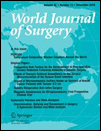Paediatric Osteomyelitis in Fiji
Abstract
Introduction
Osteomyelitis can lead to significant morbidity and long-term disability if early treatment is not initiated in a timely manner. For developing countries this can lead to a significant burden on the healthcare system. This study aims to describe the demographic variables, aetiology and outcomes of treatment and to calculate the incidence of paediatric osteomyelitis in Fiji. The micro-organism profile and the outcomes for treatment were analysed.
Methods
This is a retrospective review of medical records of all paediatric patients presenting to hospitals in Fiji over a 5-year period (2006–2010) with a diagnosis of osteomyelitis. Data were collected from the three divisional hospitals in Fiji (Colonial War Memorial Hospital, Lautoka Hospital and Labasa Hospital).
Results
Two hundred and twenty patients were identified. An annual incidence of 18.1 cases/100,000 paediatric population was identified. The highest incidence was in the itaukei (ethnic Fijian) population (21 cases/100,000). Males were at a higher risk of developing osteomyelitis (20.8/105 vs. 10.7/105). Staphylococcus Aureus was identified in 86% of all positive blood and 81% of all positive pus cultures, and it was sensitive to cloxacillin in 100% of cases. The most common factor identified preceding the development of osteomyelitis was trauma (55%) followed by skin sepsis (32%). Fifty-four per cent of the cases had chronic osteomyelitis, and the most common mode of presentation was in the form of an abscess (48%) followed by sinus/sequestrum (24%). The age group most commonly affected was between 5 and 9 years of age (19.6/105). Children with chronic osteomyelitis were more likely to require operative intervention in addition to antibiotics as compared to acute osteomyelitis (85 vs. 24%). The success rate of treating acute osteomyelitis was 92% compared to 61% for chronic osteomyelitis.
Conclusion
Paediatric osteomyelitis poses a significant problem in Fiji, especially in the male, ethnic Fijian population between 5 and 9 years of age. The chance of complete resolution after treatment of acute osteomyelitis is very good. Therefore, interventions aimed at early diagnosis and treatments are required.




